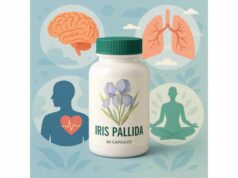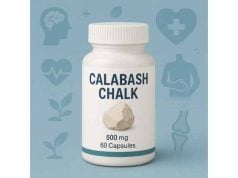
Hypergraphia describes an overwhelming compulsion to write, producing voluminous and often disorganized text. While it can coincide with creative bursts, it may also signal underlying neurological or psychiatric conditions—most notably temporal lobe epilepsy, bipolar mania, or brain injuries. Individuals may script letters, diaries, or random words for hours, disrupting daily routines and social interactions. Understanding hypergraphia helps distinguish benign creative surges from signs of deeper imbalance. In the following guide, we’ll explore what drives this urge to write, how to recognize its patterns, who’s most at risk, the path to an accurate diagnosis, and the most effective ways to restore balance.
Table of Contents
- Diving into the Essence of Hypergraphia
- Spotting the Hallmarks of Hypergraphia
- What Heightens Hypergraphia Risk and How to Prevent It
- Pinpointing Hypergraphia: Diagnostic Approaches
- Effective Solutions for Hypergraphia Management
- Your Top Questions on Hypergraphia Answered
- Disclaimer & Sharing
Diving into the Essence of Hypergraphia
Hypergraphia, from the Greek “hyper” (excessive) and “graphia” (writing), is characterized by an uncontrollable drive to write. Unlike ordinary journaling or creative phases, this condition can disrupt sleep, relationships, and daily responsibilities. Historically noted in patients with temporal lobe epilepsy, hypergraphia also appears alongside manic episodes in bipolar disorder, after brain injuries, or as a side effect of certain medications. It may manifest as highly organized narratives, stream-of-consciousness scripts, lists of random words, or intricate doodles paired with text.
At its core, hypergraphia reflects altered neural circuits:
- Temporal Lobe Hyperactivity:
- The left temporal lobe—critical for language processing—often shows increased electrical activity in hypergraphic individuals.
- Seizure focus in this region can trigger compulsive writing as an automatisms.
- Dopaminergic and Glutamatergic Imbalances:
- Excess dopamine during manic states can heighten creativity and drive.
- Abnormal glutamate signaling may amplify repetitive behaviors, including writing.
- Cognitive and Emotional Drivers:
- Writing may serve as a coping mechanism for anxiety or intrusive thoughts.
- Emotional highs—like euphoria—can fuel marathon writing sessions.
While hypergraphia can foster remarkable literary output, it often lacks structure or clear purpose. Sentences may loop, themes shift abruptly, and physical discomfort emerges from extended pen use or keyboard typing. Recognizing hypergraphia as more than eccentric creativity is vital: it may herald seizures, mood episodes, or progressive neurological changes threatening overall health. By understanding these underlying processes, individuals and clinicians can collaborate on targeted strategies—balancing the gift of expression with safeguards against burnout or injury.
Spotting the Hallmarks of Hypergraphia
Hypergraphia presents through a range of writing behaviors that exceed cultural norms and personal habits. Key symptoms include:
- Voluminous Written Output:
- Unusually lengthy journals, letters, or narratives—often spanning hours daily.
- Multiple notebooks or digital documents filled rapidly, sometimes with little editing.
- Repetitive Phrasing and Themes:
- Circling back to the same ideas or words, creating loops of text.
- Persistent focus on specific topics—religion, numbers, personal identity—repeated ad infinitum.
- Disorganized Structure:
- Lack of coherent flow: abrupt topic shifts, fragmented sentences, or pages of disconnected words.
- Interspersed drawings, doodles, or symbols amid text.
- Physical Signs of Overuse:
- Hand cramps, finger stiffness, or keyboard-related repetitive strain injuries.
- Sleep deprivation caused by late-night writing marathons.
- Emotional and Cognitive Correlates:
- Feelings of compulsion: an inner pressure that “I must write now.”
- Anxiety or restlessness if prevented from writing, akin to withdrawal.
- Waxing and Waning Patterns:
- Spurts of hypergraphia may last days to weeks, then recede.
- Tied to seizure clusters, mood swings, or medication changes.
To differentiate hypergraphia from healthy creativity, consider:
- Intent and Control:
- Creative writer plans structure and edits; hypergraphic writer feels driven beyond conscious choice.
- Impact on Daily Life:
- When writing displaces work, social contact, or self-care, it’s hypergraphia rather than hobby.
- Associated Neurological or Psychiatric Signs:
- Look for seizure activity (staring spells, automatisms) or manic symptoms (elevated mood, decreased need for sleep).
Practical Tip: Maintain a “writing log” for two weeks, noting volume (pages or word count), duration of sessions, and any accompanying symptoms—headaches, mood changes, or unusual sensations. This record provides concrete data for clinicians and helps you reflect on patterns that might otherwise seem random.
What Heightens Hypergraphia Risk and How to Prevent It
Hypergraphia doesn’t strike everyone who writes; certain risk factors elevate the likelihood of developing compulsive writing patterns. Understanding these can guide prevention and early support:
1. Neurological Conditions
- Temporal Lobe Epilepsy (TLE):
- Nearly 10–20% of TLE patients exhibit hypergraphia, often as an automatisms during partial seizures.
- Seizure clusters or medication noncompliance can precipitate sudden writing episodes.
- Brain Injuries and Lesions:
- Trauma, tumors, or infections in the left temporal or frontal lobes may trigger disinhibited language output.
- Neuroplastic changes post-injury can unmask latent compulsive behaviors.
2. Psychiatric and Mood Disorders
- Bipolar Mania:
- Elevated mood states drive rapid speech and writing; hypergraphia may accompany pressured speech.
- Rapid cycling increases risk of switching from hypergraphia to depressive withdrawal.
- Obsessive-Compulsive Tendencies:
- Individuals with OCD may channel compulsions into writing rituals, listing or checking behaviors.
3. Pharmacological Influences
- Medication Side Effects:
- Dopaminergic drugs (e.g., levodopa for Parkinson’s) can induce hypergraphia among other compulsive behaviors.
- Certain antidepressants or stimulants may exacerbate writing urges in vulnerable individuals.
4. Genetic and Developmental Factors
- Family History:
- Relatives with epilepsy, mood disorders, or compulsive syndromes increase susceptibility.
- Neurodevelopmental Traits:
- High verbal intelligence or creative personality traits may predispose one to channel neurological or emotional triggers into writing.
Preventive Measures
- Seizure Management and Medication Adherence:
- Work closely with neurologists to optimize anti-seizure regimens; monitor for automatisms.
- Mood Stabilization Strategies:
- For bipolar disorder, ensure consistent use of mood stabilizers and regular psychiatric follow-up.
- Awareness of Medication Triggers:
- Discuss potential side effects—like compulsive behaviors—with prescribers when starting new treatments.
- Structured Writing Boundaries:
- Set specific writing periods; use timers to limit sessions to 30–60 minutes.
- Alternative Creative Outlets:
- Engage in nonverbal arts—drawing, music, dance—to channel compulsive energy without overloading language circuits.
- Stress Reduction and Sleep Hygiene:
- Chronic stress and sleep deprivation can lower seizure thresholds and destabilize mood, fueling hypergraphia.
- Practices like mindfulness, progressive muscle relaxation, and consistent sleep schedules support neurological balance.
By proactively addressing underlying conditions and incorporating practical writing limits, individuals reduce the chance that inspiration morphs into an uncontrollable compulsion.
Pinpointing Hypergraphia: Diagnostic Approaches
Diagnosing hypergraphia requires a nuanced approach, teasing apart normal creative drive from pathological compulsion. Important steps include:
1. Detailed Clinical Interview
- Symptom History:
- Onset, frequency, duration, and intensity of writing episodes.
- Relationship to mood changes, seizures, or medication adjustments.
- Functional Impact Assessment:
- How writing behaviors affect work, relationships, and self-care.
- Co-occurring symptoms: sleep disturbance, anxiety, or seizure activity.
2. Neurological Evaluation
- Electroencephalogram (EEG):
- Captures seizure patterns; temporal lobe spikes often correlate with automatisms like hypergraphia.
- Video-EEG monitoring during writing episodes can confirm epileptic linkage.
- Brain Imaging (MRI/CT):
- Detects lesions, tumors, or structural abnormalities in language-related regions.
- Identifies recent injuries or progressive changes.
3. Psychiatric Assessment
- Mood and Thought Disorders Screening:
- Use scales like the Young Mania Rating Scale (YMRS) or Beck Depression Inventory (BDI) to gauge bipolar spectrum involvement.
- Compulsive Behavior Inventories:
- Yale-Brown Obsessive Compulsive Scale (Y-BOCS) for checking obsessive–compulsive contributions.
4. Neuropsychological Testing
- Cognitive and Language Batteries:
- Assess verbal fluency, executive function, and attention.
- Identify patterns of disinhibition or perseveration.
5. Medication and Substance Review
- Document all current medications, dosages, and recent changes.
- Screen for substances—prescribed, over-the-counter, or illicit—that may influence compulsive behaviors.
6. Writing Sample Analysis
- Collect diaries, notebooks, or digital documents from active writing periods.
- Evaluate volume, organization, and thematic coherence.
- Compare with baseline writing habits when asymptomatic.
7. Collaborative Case Conference
- Integrate findings from neurology, psychiatry, and neuropsychology.
- Develop a unified understanding of hypergraphia within the individual’s broader health context.
A comprehensive, multidisciplinary evaluation ensures that hypergraphia is correctly attributed—whether as a seizure-related automatisms, a mood-driven compulsion, or a medication side effect—guiding the most effective treatment path.
Effective Solutions for Hypergraphia Management
Treating hypergraphia hinges on addressing its root cause—neurological, psychiatric, or pharmacological—while helping individuals regain control over their writing compulsion:
A. Medical and Pharmacological Strategies
- Optimizing Antiepileptic Therapy:
- Adjust dosage or type of anticonvulsants (e.g., carbamazepine, valproate) to stabilize temporal lobe activity.
- Mood Stabilizers and Antipsychotics:
- Lithium or atypical antipsychotics (e.g., quetiapine) can temper manic-driven writing bursts.
- Medication Review and Adjustment:
- Taper or switch drugs known to induce compulsive behaviors (e.g., high-dose dopaminergics) under medical supervision.
B. Psychotherapeutic Interventions
- Cognitive-Behavioral Therapy (CBT):
- Focus on recognizing thought patterns that trigger writing urges and developing alternative coping strategies.
- Dialectical Behavior Therapy (DBT):
- Emphasizes distress tolerance and emotion regulation skills, reducing reliance on writing as an escape.
- Habit Reversal Training (HRT):
- Identifies pre-writing cues and replaces the compulsion with competing responses (e.g., deep breathing, hand massage).
C. Structured Behavioral Techniques
- Scheduled Writing Windows:
- Allocate fixed, limited time blocks—using alarms—to contain writing within safe bounds.
- Environmental Modifications:
- Remove writing materials outside scheduled periods; keep pens and notebooks in a locked drawer.
- Alternative Activities:
- Engage hands in crafts, puzzles, or typing-free creative outlets when urges surge.
D. Supportive Lifestyle Adjustments
- Sleep Hygiene:
- Prioritize 7–9 hours of restorative sleep; avoid late-night screens and caffeine after midday.
- Stress Management Practices:
- Incorporate daily mindfulness, yoga, or tai chi to calm neural circuits.
- Physical Exercise:
- Regular aerobic activity—brisk walking, cycling—promotes neurochemical balance and reduces compulsive urges.
E. Monitoring and Relapse Prevention
- Symptom Journaling:
- Continue writing logs to detect early signs of compulsion escalating.
- Regular Clinical Follow-Up:
- Monthly reviews initially, tapering as stability improves; adjust medications or therapy focus as needed.
- Peer and Family Education:
- Teach loved ones about hypergraphia triggers and management strategies—collaboration fosters successful containment.
The most effective treatment plans integrate medical management with behavioral modifications and supportive therapies, empowering individuals to harness their creative talents without losing control.
Your Top Questions on Hypergraphia Answered
What causes hypergraphia?
Hypergraphia often arises from temporal lobe epilepsy, where seizure activity triggers writing automatisms. It can also appear during manic episodes, after brain injuries, or due to medications that affect dopamine or glutamate pathways.
Is hypergraphia harmful?
On its own, writing isn’t harmful—but when compulsive writing disrupts sleep, work, or relationships, it can lead to exhaustion, repetitive strain injuries, and emotional distress requiring intervention.
Can hypergraphia be a sign of a stroke or tumor?
Yes. Lesions or tumors in language-related brain areas—especially the temporal or frontal lobes—can trigger disinhibited writing behaviors. Neuroimaging is crucial to rule out such causes.
How is hypergraphia treated long term?
Long-term management combines optimized anti-seizure or mood-stabilizing medications, cognitive-behavioral therapies to curb compulsions, and structured lifestyle routines to maintain balance.
When should I seek medical help?
If you or a loved one experiences sudden onset of uncontrollable writing—particularly with other neurological signs (seizures, confusion)—seek prompt neurological and psychiatric evaluation.
Disclaimer & Sharing
This article is intended for informational purposes only and should not replace professional medical advice. If you suspect hypergraphia or related neurological issues, please consult a qualified healthcare provider for personalized evaluation and treatment.
If you found this guide helpful, feel free to share it on Facebook, X (formerly Twitter), or your preferred platform—and follow us on social media for more expert health insights. Your support helps us continue delivering valuable, evidence-based content!








